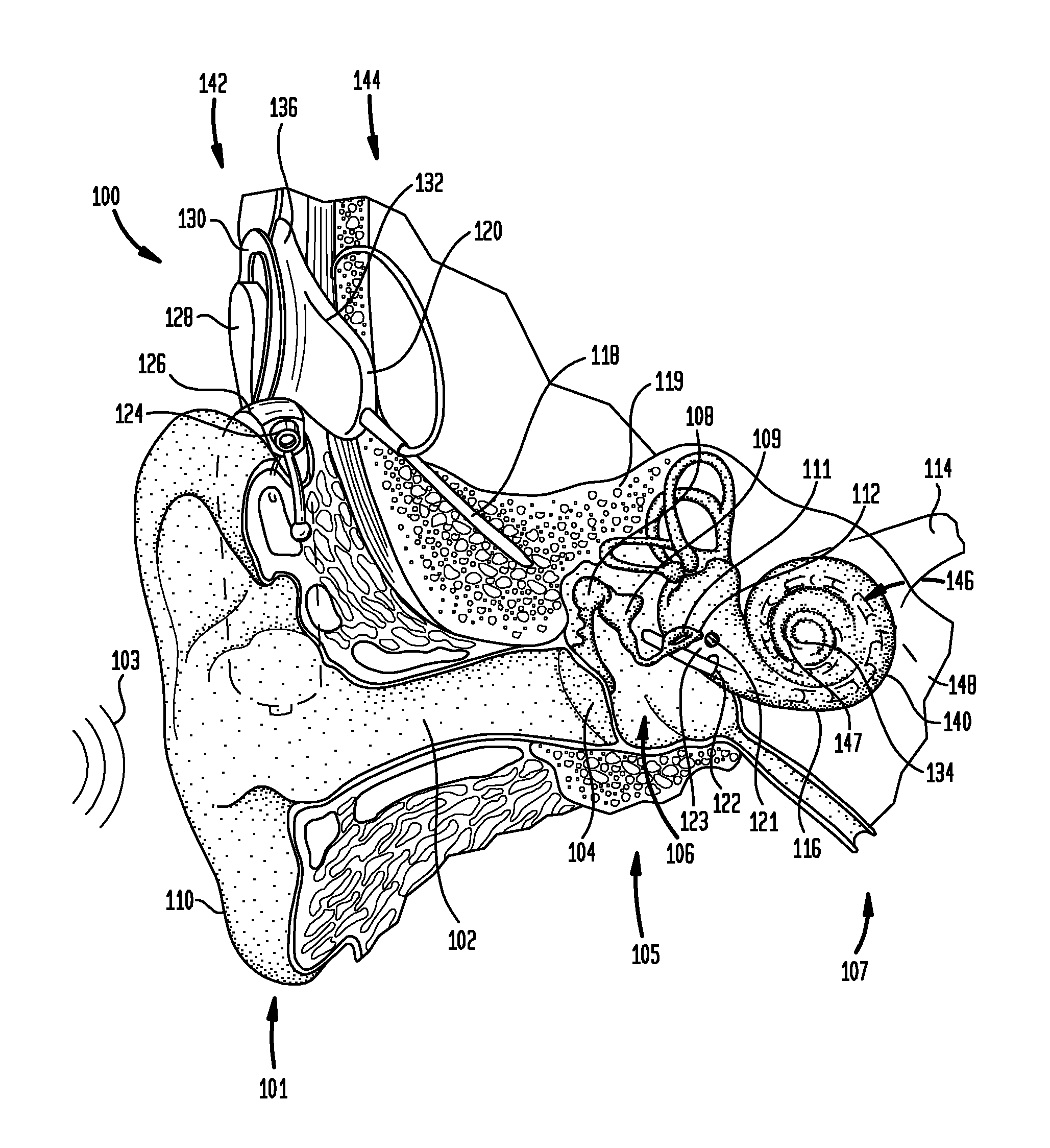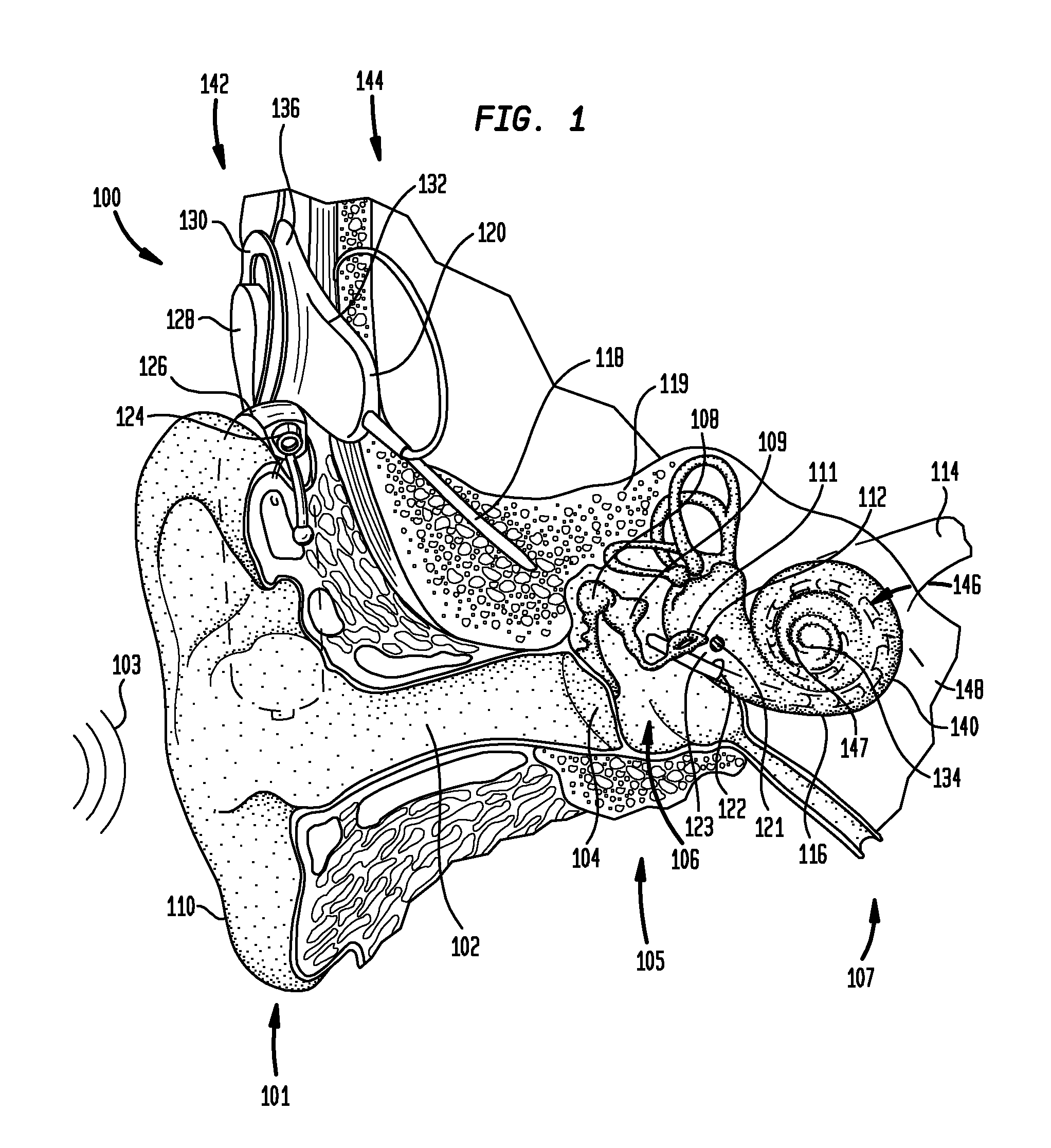Multi-electrode channel configurations
a multi-electrode channel and configuration technology, applied in speech analysis, deaf aid adaptation, therapy, etc., can solve the problems of inability to focally stimulate small subpopulations of spiral ganglion cells with monopolar stimulation of the placed electrodes, and the inability to focus stimulation on electrically distant target neurons
- Summary
- Abstract
- Description
- Claims
- Application Information
AI Technical Summary
Benefits of technology
Problems solved by technology
Method used
Image
Examples
Embodiment Construction
[0016]Aspects of the present invention are generally directed to determining stimulation channels for a stimulating device. In an embodiment, a set of weights for a plurality of stimulation channels of the stimulating hearing prosthesis is determined. First a transimpedance matrix is determined by measuring performing measurement to determine the off-diagonal terms of the transimpedance matrix. As will be discussed in more detail below, this may be accomplished, for example, by stimulating each electrode with a known current and recording the resulting voltages on the un-stimulated electrodes. Then, the diagonal terms of the transimpedance matrix are determined by extrapolation. An iterative process is then employed that inverts the transimpedance matrix to obtain a transadmittance matrix. An adjustment to the diagonal of the transimpedance matrix is then determined based on any positive off-diagonal terms of the transadmittance matrix. Once an adjustment is determined that results ...
PUM
 Login to View More
Login to View More Abstract
Description
Claims
Application Information
 Login to View More
Login to View More - R&D
- Intellectual Property
- Life Sciences
- Materials
- Tech Scout
- Unparalleled Data Quality
- Higher Quality Content
- 60% Fewer Hallucinations
Browse by: Latest US Patents, China's latest patents, Technical Efficacy Thesaurus, Application Domain, Technology Topic, Popular Technical Reports.
© 2025 PatSnap. All rights reserved.Legal|Privacy policy|Modern Slavery Act Transparency Statement|Sitemap|About US| Contact US: help@patsnap.com



